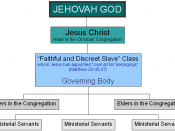Hutt and Speh (2010) describe organisational buying behavior as a process and not just a simple isolated event. In the consumer buying process we see the simple procedure of an everyday consumer making a simple purchase as they wish. The organisational buying process is much more complex as it involves different conditions in different buying situations that need thorough analysis in order for a decision to be made (Bunn & Park, 2003). This essay will go on to identify the complexities of the organisational buying process together with the forces that are involved when making an organisational buying decision.
The organisational buying process is a complex due the number of factors involved. The organisational buying process according to Hutt and Speh (2010) involves eight major stages, these include the problem recognition within the organization, the supplier search and the final step of a performance review of the buying process, these are just three of the eight major stages.
Although these stages are a guideline as to the organisational buying process that is all they merely are, a guideline. This is because different industry's and different businesses have their own unique stages of the buying the process. Each organization choosing a buying process that suites their own needs. This shows how complex the buying process is that there is no precise procedure that will guarantee a business a successful buying process.
Another complexity involved in the organisational buying process is that of the buying situation that is involved when making purchases for an organisation. Organisations have three different types of buying situations that involve different levels of problem solving. It is not a simple process of just choosing a supplier and buying the product but a much more complex process that involves different variables within an organisation that effect the...


